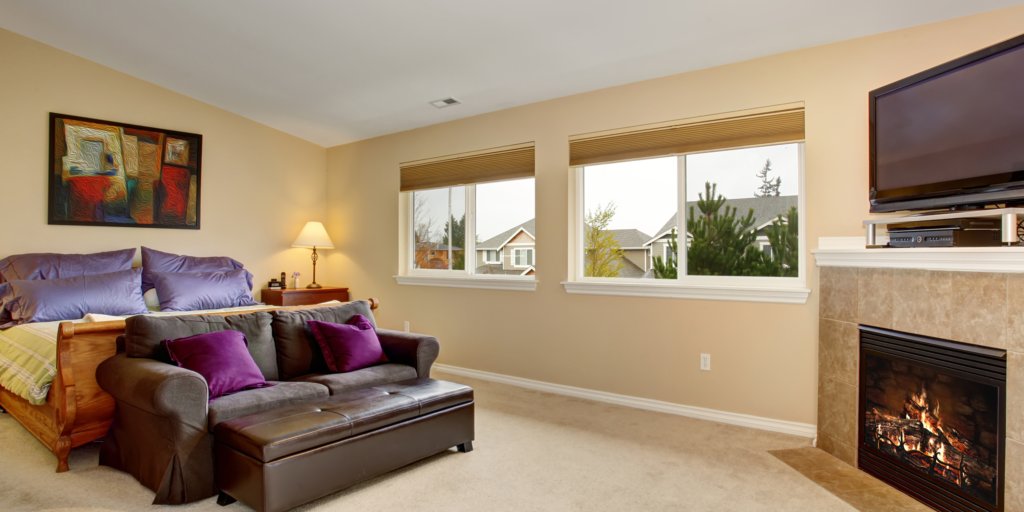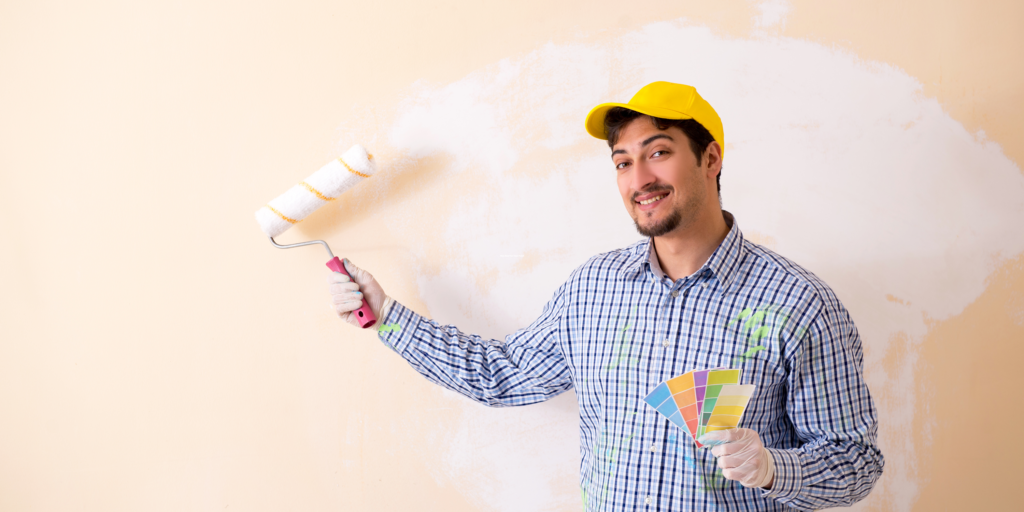We’ll discover how paint colors may make your bedroom a sanctuary. Choosing the proper colors for your bedroom is important because it’s where you start and end each day. Colors affect mood, vitality, and well-being.
Understanding the psychology of color
Color affects our moods and a room’s atmosphere. Choosing bedroom paint colors requires knowledge of color psychology.
Warm hues like red, orange, and yellow boost vitality and create a pleasant, inviting atmosphere. To add passion and energy to your bedroom, choose these colors.
However, cold colors like blue, green, and purple soothe and calm. These hues create a peaceful retreat for unwinding after a hard day.
White, beige, and gray are versatile and make great backgrounds for accessories and furniture. They also convey elegance and sophistication.
Before choosing, think about how you want your bedroom to feel. Each color has its own attributes. Understanding color psychology will help you create the right atmosphere in your home, whether you want exuberance or peace.
Factors to consider before choosing paint colors for your bedroom
There are various aspects to consider while choosing bedroom paint colors. Set the ambiance for your bedroom first. Do you like a tranquil or lively space?
Next, consider the bedroom size. If you have a small room, lighter tones might make it feel bigger. For a larger bedroom, darker hues can bring warmth and friendliness.

Another consideration is the bedroom’s natural illumination. The amount of sunlight entering the space at different times of day can change the wall color. Cooler colors like blues and greens look wonderful in naturally lit rooms.
Color schemes should also reflect your tastes. Like warm earthy colors like browns or yellows? Or do you enjoy cool blues or purples? Consider which colors make you calm and cheerful.
Popular bedroom color trends
Staying current with paint trends is crucial when picking bedroom paint colors. By using trendy color schemes, you may create a fashionable bedroom that represents your style.
Current bedroom color trends include peaceful and tranquil tints. Soft blues, greens, and lavender create a relaxing bedroom. These colors calm and create an oasis in your bedroom.
Neutral tones are also popular. Beige, greige, and off-white give a timeless backdrop for easy accessorizing. Neutrals also make smaller bedrooms look bigger, making them ideal.
Jewel or earthy colors are great for dramatic color statements. Your bedroom can look classy and dramatic with deep emerald greens, sapphire blues, or warm terracotta.
Pops of color from cushions or artwork are another way to add color to your bedroom without overwhelming it. You can experiment with different colors without committing to a color palette.
How to incorporate multiple colors in your bedroom
Your bedroom can have more depth, personality, and visual intrigue with multiple hues. But it must be done cohesively and balanced. Here are some ways to decorate your bedroom with multiple colors.
Choose a primary and one or two complementary colors for your palette. This will give the room harmony and variation. Layer brighter accent colors over a neutral basis like white or beige.
Bedding and fabrics can incorporate different colors. Use pillows, throws, and drapes from your color pallet. This will bring color and unify the room.
Artwork can also add color. Find paintings or prints using your colors.
Remember accessories! Lamps, rugs, and decorations can match the room’s color scheme.
By following these principles and carefully choosing your colors, you may add numerous hues to your bedroom without overwhelming it.
Tips for creating a cohesive color scheme
1. Start with a focal point: Use a focal point to anchor your bedroom and guide your color choices when designing a color plan. The bedding, artwork, or statement furniture may be this.
2. Use 60-30-10: This rule works well for balancing any room. You should choose one main (60%), one secondary (30%), and one accent (10%) color. This adds visual harmony and interest.
3. Choose your mood: Colors inspire different emotions. Cool blues calm, while warm yellows energize. Consider your bedroom’s mood when choosing colors.
4. Always try paint swatches on your walls before committing. Lighting affects color, so what appears well in daylight may not seem good at night.
5. Don’t fear neutrals: Neutrals are timeless and versatile for bedroom color coherence. They create a relaxing atmosphere that highlights other interior components.
6. create texture with varied finishes: Use matte, satin, or glossy paints in your color palette to create depth and interest to your bedroom.
A well-planned color scheme may transform your bedroom!
DIY vs hiring a professional
You may have to decide whether to paint your bedroom yourself or hire a pro. Both solutions offer pros and cons, so choose what works for you.

Those on a budget or who like hands-on crafts may prefer DIY. Painting your bedroom yourself saves money on labor and provides you ultimate control. If you like creativity, it can be fun and fulfilling.
Remember that painting is harder than it looks. It demands planning, talent, and precision. If these features overwhelm you or time is an issue, consider hiring a professional painter.
Conclusion
Choosing the proper bedroom paint colors can dramatically affect its appearance. Understand the psychology of color, consider lighting and size, and follow trends to create a bedroom that reflects your taste and promotes relaxation.
Consider how different colors make you feel when choosing bedroom paint colors. Warm colors like reds and oranges express vitality and intimacy, while cold colors like blues and greens relax. If your bedroom is for unwinding after a long day, neutrals or pastels may be better.
Consider additional aspects before choosing a color palette. Assess your room’s natural light; darker tones absorb light in smaller spaces but are warm in larger chambers. Consider your room’s size; lighter colors make tiny rooms look bigger, while darker colors make larger rooms feel cozier.
Explore interior décor periodicals and online to keep up with color trends. Trends can inspire new looks that match modern tastes.

